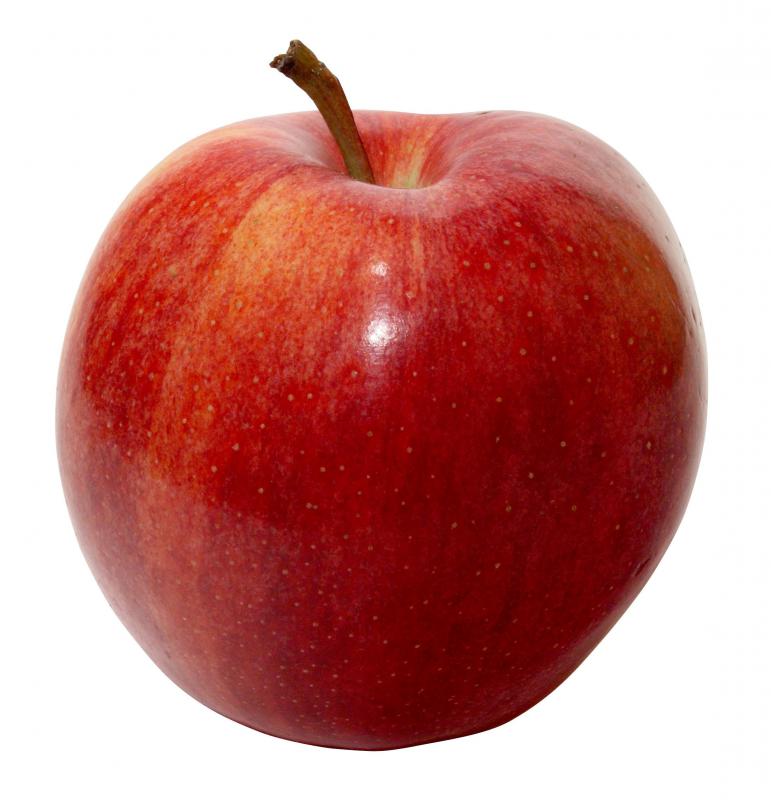At WiseGEEK, we're committed to delivering accurate, trustworthy information. Our expert-authored content is rigorously fact-checked and sourced from credible authorities. Discover how we uphold the highest standards in providing you with reliable knowledge.
What Are the Best Tips for Making Fruit Compote?
Making the best fruit compote involves using ingredients that are in season and fresh, carefully pairing them with spices and experimenting with flavorful sweeteners, as well as using juices or liqueurs for a finishing touch. Seasonal ingredients ensure the freshest fruit with sweet, ripe flavor. While frozen fruit can be used, fresh produce offers palette-pleasing results, as does playing with familiar and exotic spices and herbs. Sweeteners like cane sugar, honey, and dates all give different tastes and textures for the best custom compote, as do juices like lime and orange as well as flavored liqueurs.
Using seasonal ingredients when making fruit compote provides you with the healthiest option available. Slightly over-ripe fruit has a higher sugar content and will produce a sweeter mixture, while tangier goods will need some sweetening. Summer fruits include peaches, strawberries, and plums, as well as rhubarb and others, depending on your location. Fall and winter brings fresh pears, apples, and citrus, which all work well for this dish.

Frozen ingredients may be used in fruit compote, but fresh produce retains its texture and nuanced flavors better. It also works much better if you want a compote with firmer pieces of fruit. Soaking dried fruit and adding it to your recipe can add density and texture as well, and the flavors are slightly different than fresh produce.
Pairing spices with your compote can bring out its complex flavors. Fresh, chopped mint accents summer fruit like berries and peaches well. Cinnamon can be used with just about any fruit, and pungent spices like nutmeg, cloves, or cardamom can add a seasonal taste to fall and winter compotes. Lavender or lemon basil can add an unexpected, exotic taste to otherwise basic recipes.

Experiment with various sweeteners for a balanced fruit compote. Turbinado or raw cane sugar can be slowly melted into a liquid to thicken the fruit, as can honey, maple syrup, or agave. Each sweetener adds a unique flavor, and honey typically gives a thicker texture than maple syrup or granulated sugar. Dried dates or figs also add sweetness and will slightly thicken the sauce. Sweetener may not be needed if you use very ripe fruit and want a thinner compote.

A splash of juice or liqueur further complements the fruit compote's flavors. Lime juice works well with fruits seasoned with mint, and it adds tang to neutralize very sweet mixtures. Orange juice adds a milder tang with a touch of sweetness. Liqueurs can add different flavors as well, depending on their ingredients.
AS FEATURED ON:
AS FEATURED ON:
















Discussion Comments
I have a recipe for a hot fruit compote using canned fruit. This includes canned cherries, peaches, pineapple and pears. I also mix in some pie filling and grated coconut.
What I like about using the canned fruit is I don't have to worry about finding fresh fruit that is in season. While this might not taste as good as using the fresh fruit, it still makes a nice dessert.
You bake this in the oven for about 30 minutes, and it tastes best fresh out of the oven when it is hot and bubbly. I have also seen a recipe using dried fruits, but have never tried this.
For some reason the dried fruit doesn't sound as appealing, but I might be surprised.
I have made fruit compote using several different kinds of fruit. I think my favorite way of making this is in the fall when we have apples in abundance. I will serve this warm, with some cinnamon and honey mixed in, and some whipped cream on top.
I never have trouble getting my family to eat dessert, but this is one that I know I will never have any left over. It really hits the spot on a cool, fall day.
The first time I tasted fruit compote was when I was on vacation in France. Where we were visiting this was often on the menu at a local restaurant. It was also not uncommon to see fruit compote at the supermarket.
In my mind I thought it would taste kind of like apple sauce, but the texture was different. It definitely had an apple taste, but the taste would also differ depending on how they flavored it.
Many people in this country make this at home and enjoy it warm or cold just about any time of the day. While I didn't mind it, I guess I didn't enjoy it enough to try making my own fruit compote when I got home.
Post your comments